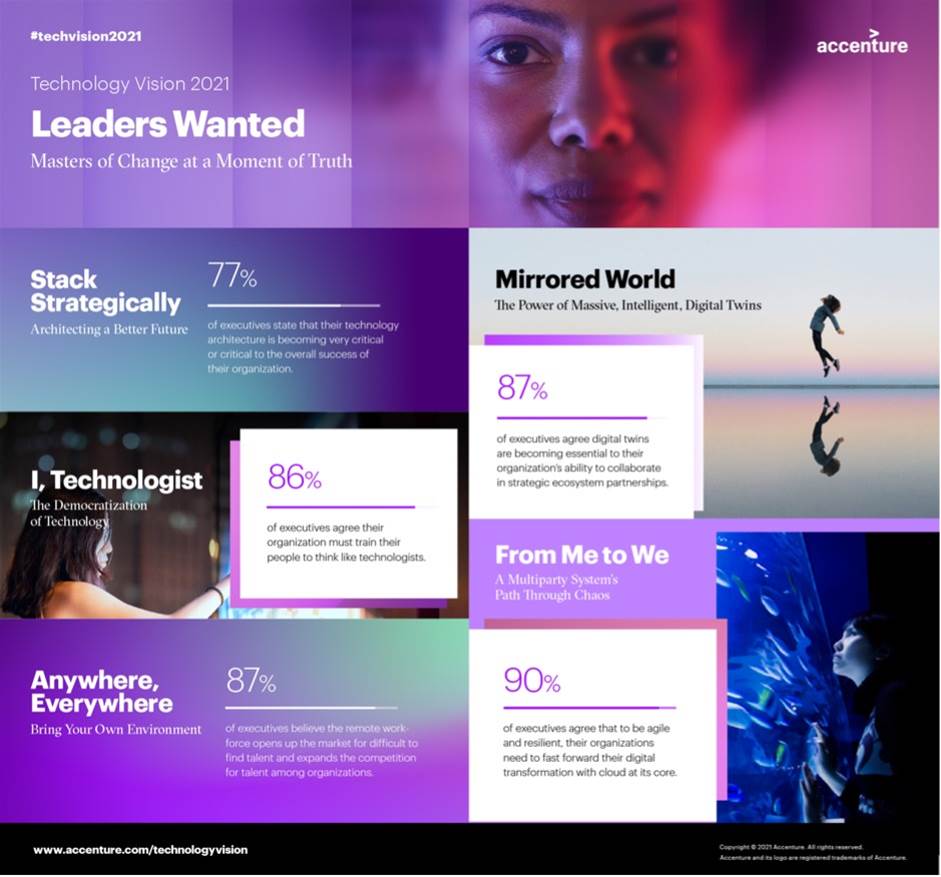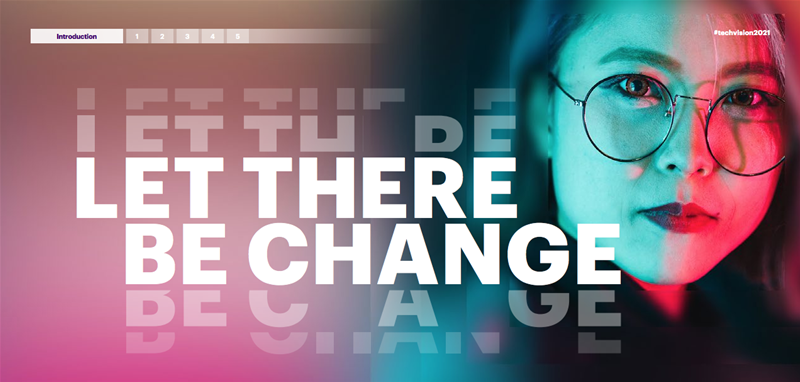As companies shift from reacting to the crisis to reinventing what comes next, they must change the way they do business and adapt to the realities of post-pandemic wold.
Among these new realities are a change in human experience, where every business is now a technology business, a transformation in the way people work and collaborate, and the new reality that places sustainability as the new digital.
Commenting on its recently announced Technology Vision 2021 survey, Ryoji Sekido, Senior Managing Director, Accenture Technology Lead for Japan, China, Asia Pacific, Africa and Middle East, said the use of technology “sustained us through the pandemic, and it is redefining our reality. It has also pushed a giant fast-forward button to the future.”
The survey found that 64% of APAC executives reported that the pace of digital transformation for their organisation is accelerating, with 23% saying they are significantly progressing.
“In May, 50% of companies surveyed said they are going to significantly increase investment in digital transformation – by July it was 80%,” added Sekido.

Compete on architecture
The pandemic has also created an opportunity to rapidly re-platform the enterprise and create entirely new kinds of value, and become an industry leader, said Marc Carrel-Billiard, Senior Managing Director and Lead for Technology Innovation and Accenture Labs.
One of the key trends is companies competing on their architecture. “Companies need to rethink how applications are developed and deployed, and compete upon technology architecture to be more agile and flexible,” added Carrel-Billard.
Citing statistics from the Technology Vision 2021 report, Carrel-Billard noted how Takeda, a leading Japanese pharmaceutical company, is fast-tracking its digital transformation and journey to AWS cloud. “The initiative will reduce Takeda’s data power consumption by up to 80% and its carbon emissions from physical data centres by up to 85%”.
Carrel-Billard also pointed out how, with the layering of AI, today’s capabilities allow digital twins to be rapidly deployed across many enterprises and industries. With 35% of APAC executives reporting that their organisation is currently using digital twins for innovation, Carrel-Billard expects digital twins to unlock new opportunities to operate, collaborate, and innovate.
He shared the example of Virtual Singapore, created by Singapore’s National Research Foundation, a digital twin of the city-state using 3D semantic modelling to combine map and land data with real-time data on climate, traffic, and more.
Change how we work and collaborate
On how shifts in technology development redefined work, Carrel-Billiard said that “every employee can now access powerful capabilities,” as natural language processing, low-code platforms, robotic process automation democratise technology.
The survey found that 63% of APAC executives project that 10 to 40% of their workforce will be working remotely in one year. As the boundaries of enterprise have expanded, people can “bring their own environment” by being given the freedom to seamlessly work from anywhere, Carrel-Billiard highlighted.
“The next generation of workforce leaders will be the ones that position a hybrid approach not as something to be endured, but as something that drives value.”
Carrel-Billiard brought up the example of Fujitsu’s new “Work Life Shift”, a program that seeks to maximise creativity and efficiency by letting the company’s 80,000 workers determine the best work situation for themselves. “All employees will be able to work from home permanently and to work flexible hours, and this new model will let employees choose where they want to work.”
Digitise your partnerships
Carrel-Billiard also urged companies to start investing in technologies that will open their businesses up to digitally led partnerships with the use of multi-party systems. “53% of APAC executives report that the number one element driving an increase in technology-enabled ecosystems is that technologies available to support ecosystems have improved. Such arrangement helps businesses gain greater resilience and adaptability to approach the market to set new, ecosystem-forward standards for their industries.”
For example, Accenture teamed with Mastercard, Amazon Web Services, Everledger and Mercy Corps to develop the Circular Supply Chain. This multiparty solution combines allows customers to seamlessly send gratuities directly to the producers; biometric capabilities to help certify identities and ensure payments reach the right individuals; and manufacturers and distributers to monitor and prepare for unexpected upstream and downstream shifts for their goods.
“The pandemic has pushed a fast-forward button and companies now have to reinvent themselves in record time. This has created a moment of truth, which is also a moment of trust, where customers are expecting clients to deliver something reliable, sustainable and responsible in order to work in the new normal,” Sekido said.









